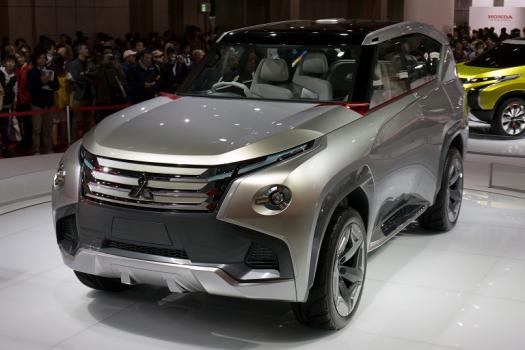SiC cracks auto-markets

Forecasts from Lux Research predict SiC will displace silicon in electric vehicles by 2020. Have GaN-on-silicon alternatives stalled asks Compound Semiconductor.
The Mitsubishi Concept GC-PHEV; plug-in hybrid electric vehicles are set to be the sweet-spot for SiC devices.
As the market for discrete power electronics components strides ahead - Lux Research's latest forecast comes in at $21 billion by 2020 - manufacturers are racing to deliver SiC and GaN-on-silicon devices with higher performances than ever before.
Industrial, electronics and renewables generation applications all demand these smaller, more efficient wide bandgap devices, but right now, by far the most promising market for power electronics makers is electric vehicles. .
As Lux Research analyst, Pallavi Madakasira, highlights, efficient power electronics is crucial to reducing battery sizes in electric vehicles, which has massive knock-on benefits for the rest of the automotive system including wiring, packaging and weight.
"Once you start achieving the efficiency savings, you can get away with having a smaller lithium ion battery, and then you only require, for example, a smaller heat sink, so you cut costs and save space and weight," she says. "[Efficiency savings] have a cascading effect across the entire system that really do add up."
In her latest research, Madakasira forecasts SiC device manufacturers, such as Infineon, Cree and ST Microelectronics, will cash in on the auto-market's growing performance needs before GaN contemporaries, with SiC diodes displacing silicon devices as early as 2020. "Silicon carbide has a significant lead in the industry primarily due to the sheer number of developers that have invested in the technology," she says. "Big volume manufacturers, such as Infineon and ST churn out several hundreds of thousands if not millions of diodes."
In contrast, Madakasira reckons only around two GaN-on-silicon manufacturers are offering products at lower voltage applications. And as she adds: "We know that the GaN developers are not planning to target the automotive industry anytime in the near future, at least not in the next three to five years."
Instead, these GaN players are already making in-roads to renewable generation and grid storage markets. "Certification [in automotive markets] takes time and GaN players cannot generate revenue overnight here," says Madakasira, "We will see the first GaN solar inverter from Transphorm hitting the market come 2015. The technology must make its mark and establish credibility here before transitioning to what might seem like a more daunting automotive market."
In the meantime, SiC devices looks set to reach plug-in hybrid electric vehicles first, where power savings equate to greater reductions in overall vehicle cost, (see graph).
![]()
Power efficiency can have a massive impact on a vehicle's systems level costs.
As Madakasira points out, electric vehicles such as the Nissan Leaf probably won't contain a SiC device, as the battery is already small and a more exotic diode or transistor is simply too expensive for this low-end model.
"The cost savings must offset the pricier SiC device," she explains. "This cannot happen in the Nissan but we do expect plug-in vehicles to be the sweet-spot for these types of solutions."
Automotives after all
But it is only a matter of time before GaN-on-silicon diodes and transistors reach electric automotive markets. Madakasira reckons the technology will probably catch up within the decade, with products being released come 2023, once devices have been tried and tested in other applications.
"It's a common misconception that SiC is the only technology that is ideal for automotives. Yes, SiC can operate at the high temperatures but not every function within the vehicle requires [this]; so for GaN, it's a question of when, not if," she says. "Then we also expect to see hybrid systems, either a combination of silicon, SiC and GaN, or simply a combination of GaN and SiC."
Cost shouldn't pose a major issue for later GaN-on-silicon entrants. While the expense of growing complex buffer layers on silicon substrates negates some of the obvious cost benefits using these large diameter wafers, devices will still be cheaper than SiC products. "GaN-on-silicon device prices will never be as cheap as [pure] silicon alternatives but they will likely be cheaper than SiC devices where substrate costs have always been high," explains Madakasira.
And the analyst reckons future prospects may still exist for GaN-on-SiC devices, at the high voltage applications currently reserved for SiC devices. "It's a given that SiC can do really well at high voltages [900V and beyond], but can GaN-on-SiC do that too?" she asks. "Companies claim to have the know-how, still there is not any business commercialising these products right now, so it remains to be seen."































